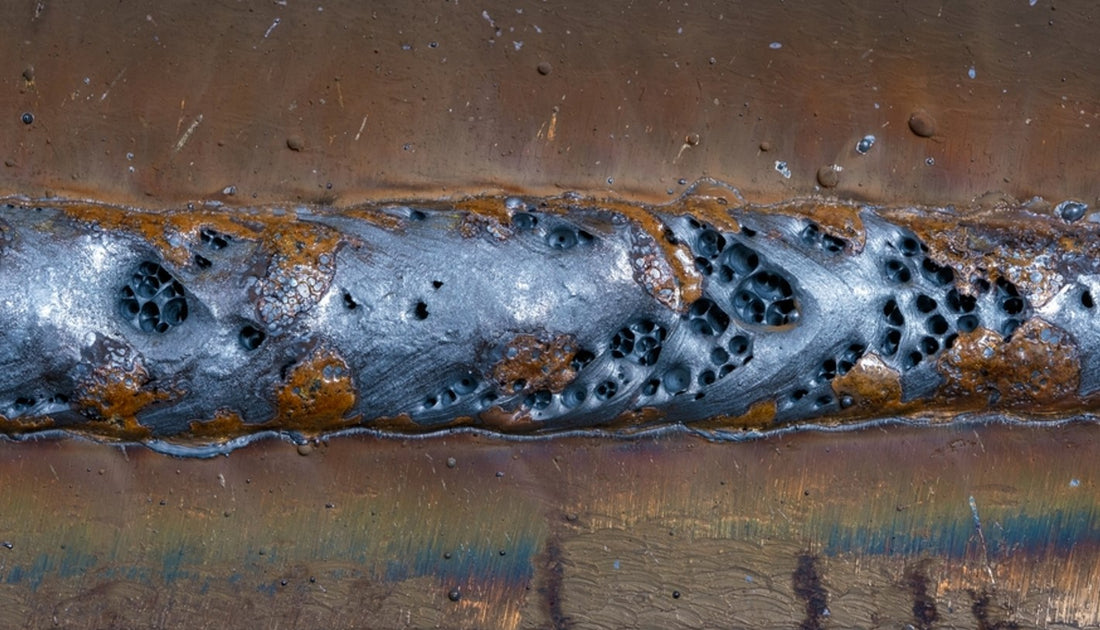What is Porosity in Welding: Finest Practices for Preventing Porous Welds
What is Porosity in Welding: Finest Practices for Preventing Porous Welds
Blog Article
Porosity in Welding: Identifying Common Issues and Implementing Ideal Practices for Avoidance
Porosity in welding is a pervasive issue that typically goes undetected until it creates significant problems with the honesty of welds. This common defect can compromise the strength and sturdiness of welded structures, positioning safety and security risks and causing pricey rework. By understanding the source of porosity and executing efficient avoidance techniques, welders can dramatically boost the high quality and reliability of their welds. In this discussion, we will discover the essential aspects contributing to porosity formation, analyze its destructive results on weld performance, and talk about the finest methods that can be adopted to decrease porosity event in welding processes.
Usual Sources Of Porosity

An additional regular perpetrator behind porosity is the presence of pollutants on the surface of the base metal, such as oil, oil, or corrosion. When these impurities are not effectively removed prior to welding, they can evaporate and end up being caught in the weld, creating flaws. Moreover, making use of filthy or damp filler products can introduce contaminations into the weld, adding to porosity concerns. To mitigate these typical sources of porosity, thorough cleansing of base steels, proper protecting gas selection, and adherence to ideal welding criteria are crucial methods in attaining top quality, porosity-free welds.
Effect of Porosity on Weld High Quality

The presence of porosity in welding can considerably compromise the architectural stability and mechanical properties of welded joints. Porosity produces gaps within the weld metal, damaging its total strength and load-bearing capability. These voids act as anxiety concentration points, making the weld a lot more vulnerable to breaking and failing under used tons. In addition, porosity can reduce the weld's resistance to deterioration and various other ecological aspects, even more reducing its durability and performance.
Welds with high porosity degrees tend to exhibit lower influence toughness and minimized ability to deform plastically prior to fracturing. Porosity can hamper the weld's ability to effectively send pressures, leading to early weld failing and prospective safety risks in vital structures.
Best Practices for Porosity Avoidance
To improve the structural stability and top quality of bonded joints, what certain measures can be applied to lessen the incident of porosity throughout the welding process? Utilizing the proper welding method for the particular material being bonded, such as adjusting the welding angle and weapon position, can additionally stop porosity. Regular inspection of welds and prompt remediation of any kind of concerns recognized throughout the welding procedure are essential methods to prevent porosity and produce premium welds.
Importance of Correct Welding Methods
Carrying out correct welding techniques is critical in guaranteeing the architectural integrity and these details top quality of welded joints, building upon the structure of reliable porosity prevention measures. Excessive heat can lead to increased porosity due to the entrapment of gases in the weld pool. Furthermore, using the appropriate welding specifications, such as voltage, existing, and take a trip speed, is important for achieving audio welds with very little porosity.
Additionally, the choice of welding procedure, whether it be MIG, TIG, or stick welding, need to line up with the specific requirements of the project to guarantee ideal outcomes. Correct cleansing and prep work of the base steel, as well as selecting the best filler material, are likewise necessary parts of skillful welding techniques. By sticking to these ideal techniques, welders can decrease the threat of porosity development and generate high-quality, structurally sound welds.

Checking and Top Quality Control Measures
Examining treatments are crucial to identify and protect against porosity website link in welding, making sure the stamina and toughness of the final product. Non-destructive screening approaches such as ultrasonic screening, radiographic testing, and visual inspection are generally used to determine prospective defects like porosity.
Performing pre-weld and post-weld evaluations is also important in keeping quality assurance requirements. Pre-weld assessments include verifying the products, devices setups, and tidiness of the workplace to stop contamination. Post-weld examinations, on the other hand, analyze the final weld for any kind of defects, including porosity, and confirm that it meets specified requirements. Applying an extensive quality assurance Discover More Here plan that consists of extensive screening procedures and examinations is critical to decreasing porosity concerns and ensuring the total quality of welded joints.
Conclusion
Finally, porosity in welding can be a common problem that affects the top quality of welds. By recognizing the usual sources of porosity and executing finest techniques for avoidance, such as correct welding techniques and testing steps, welders can make sure high quality and reputable welds. It is essential to focus on avoidance techniques to reduce the event of porosity and maintain the integrity of welded structures.
Report this page